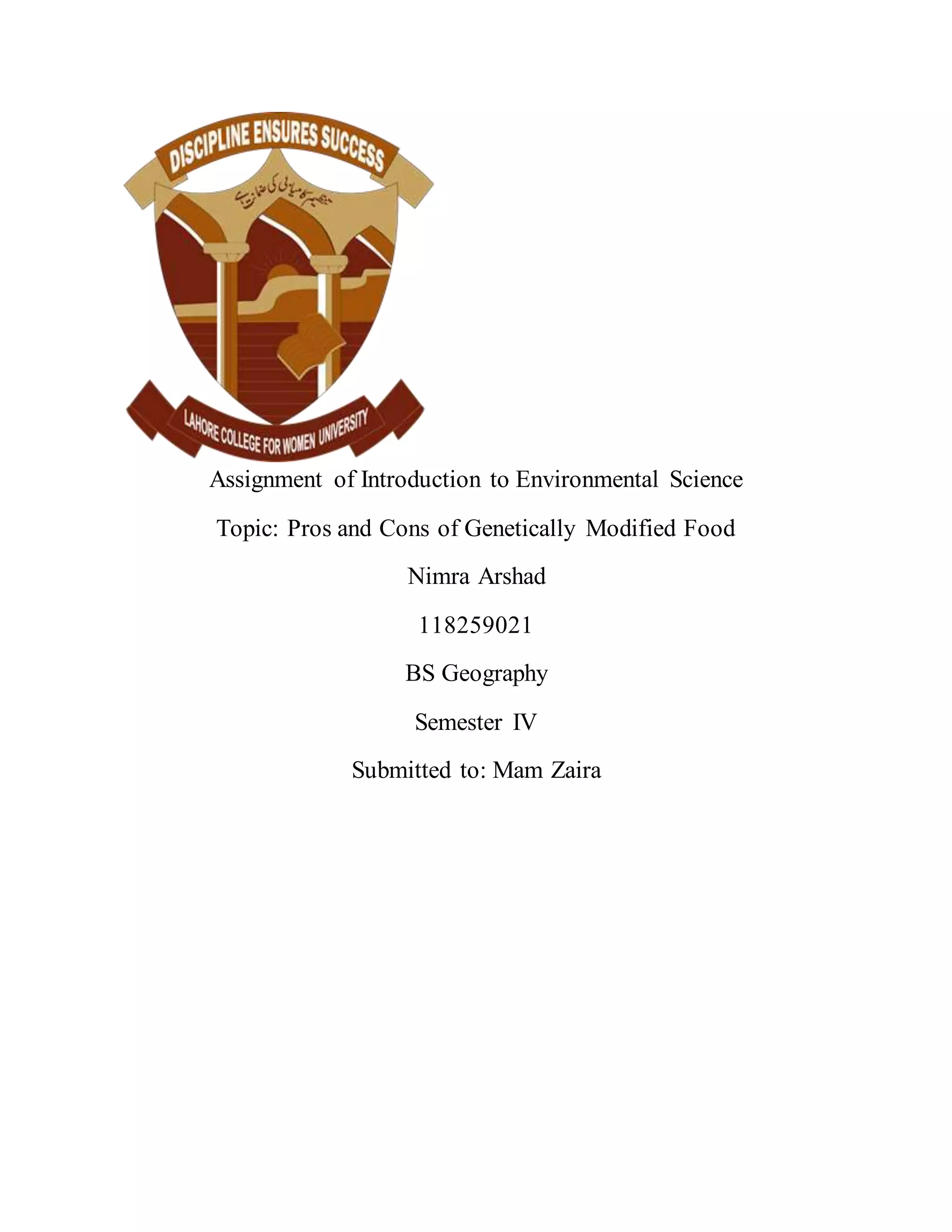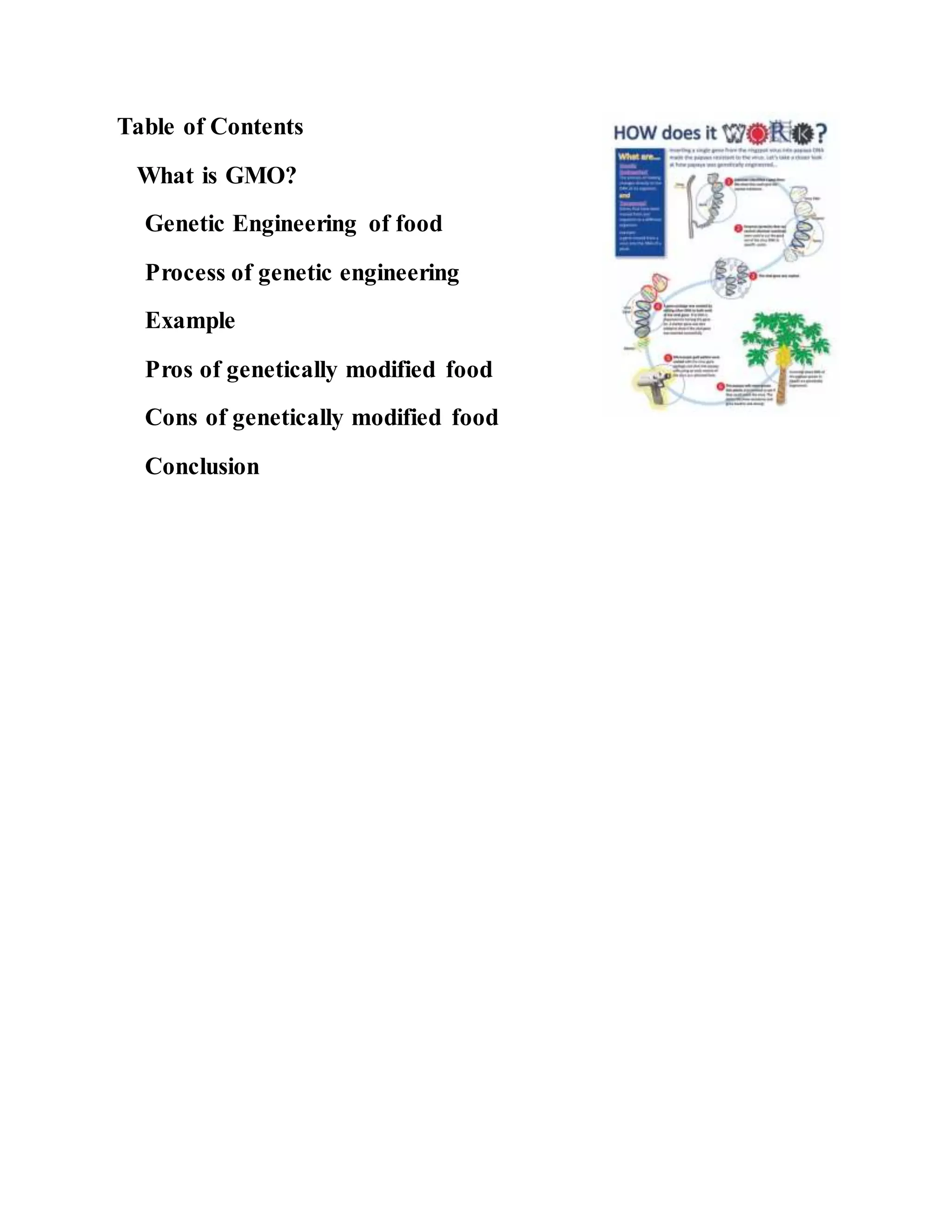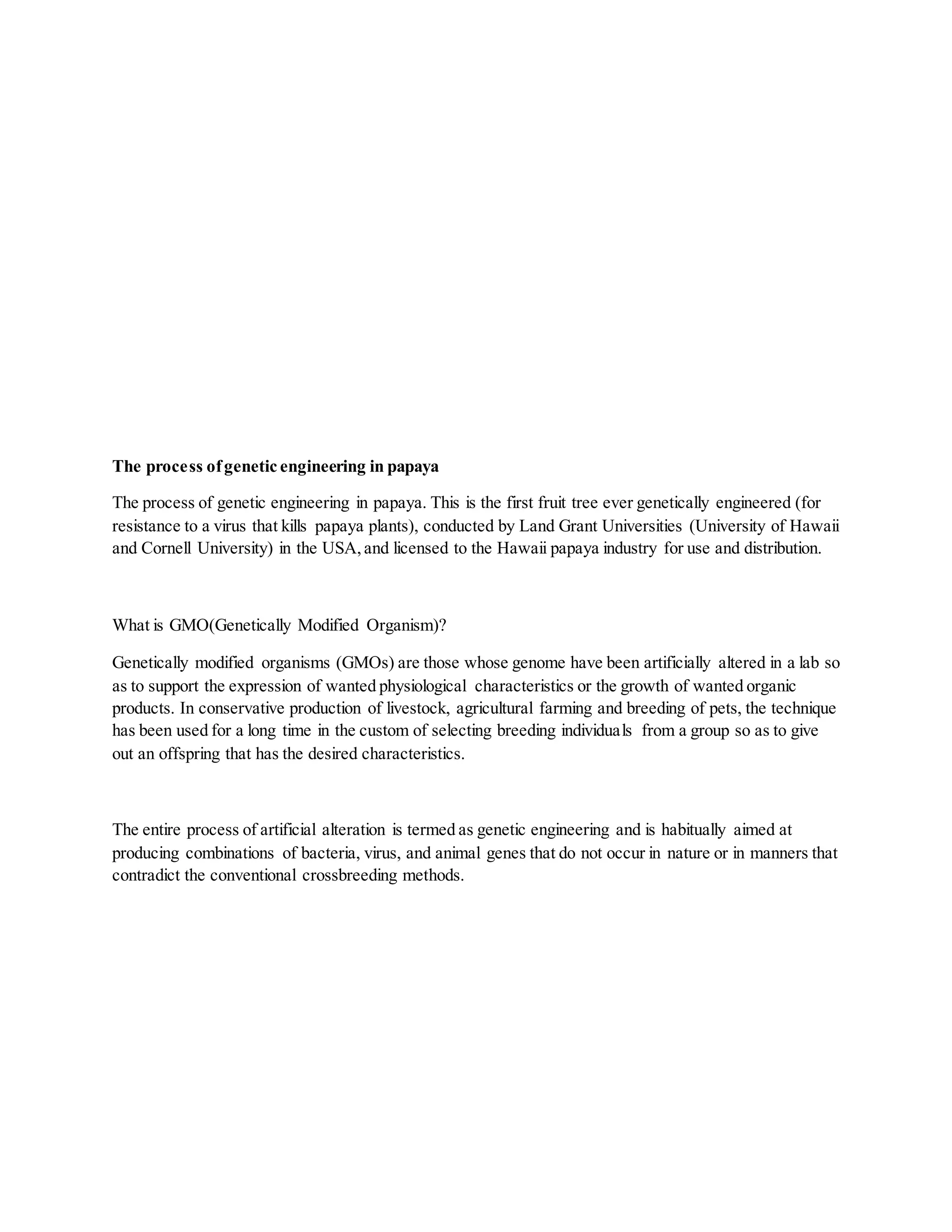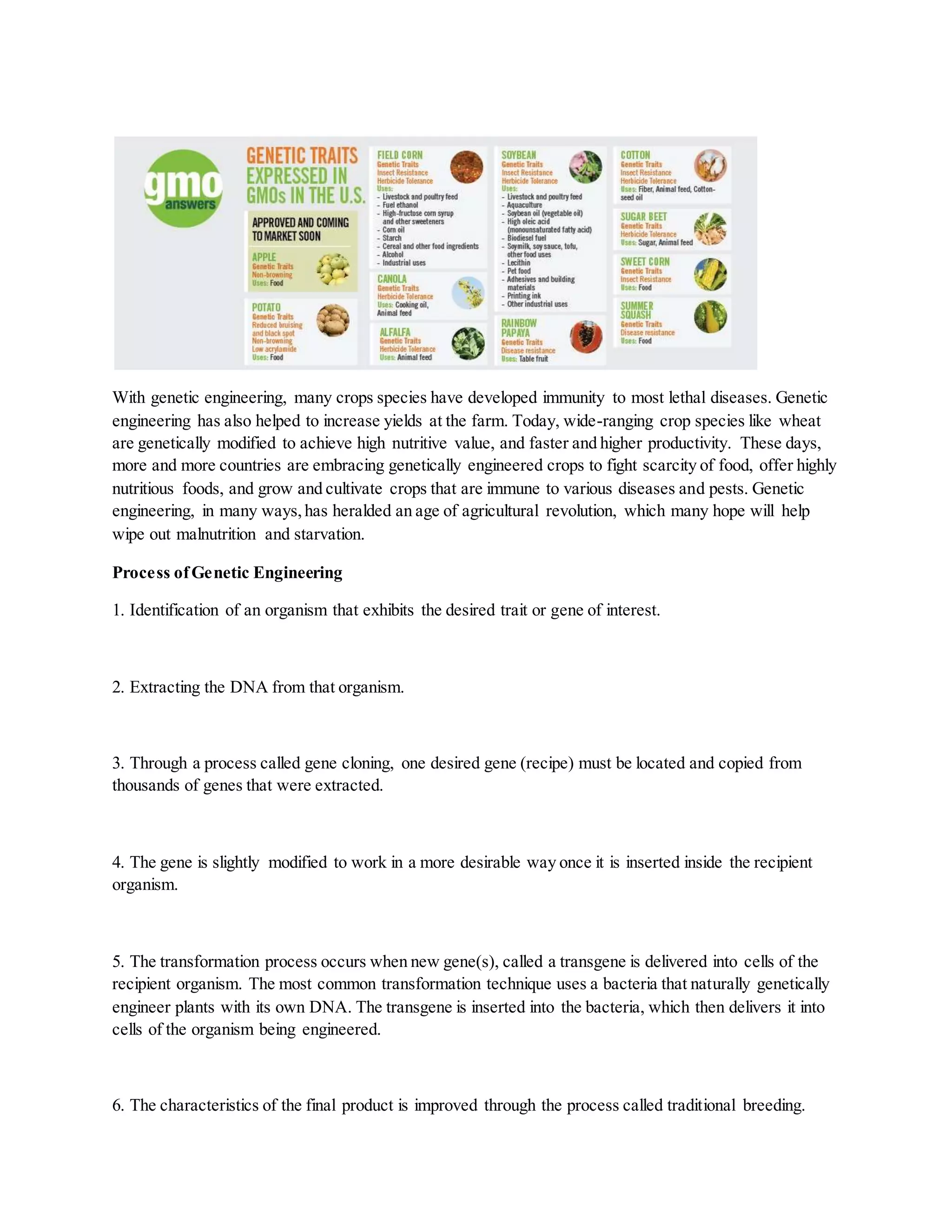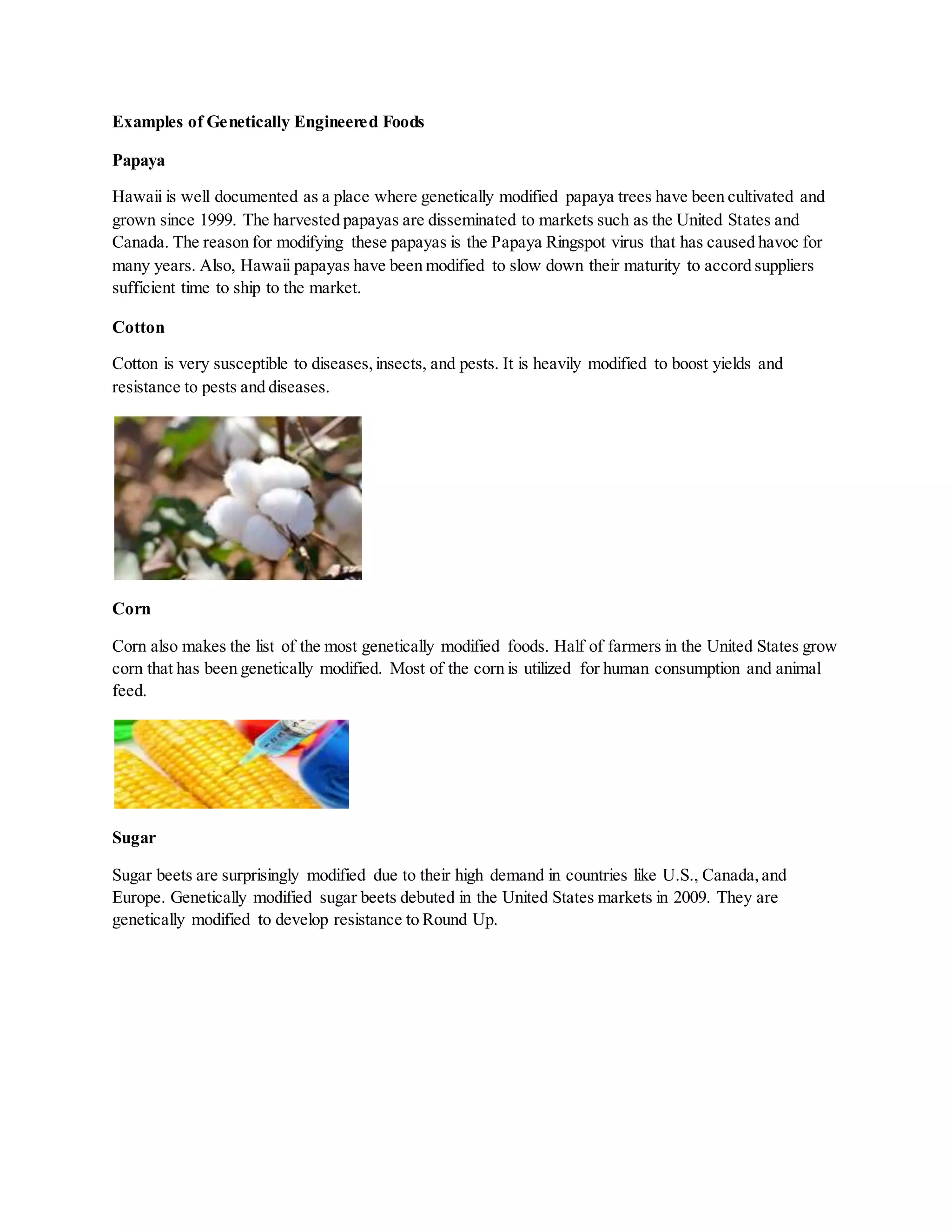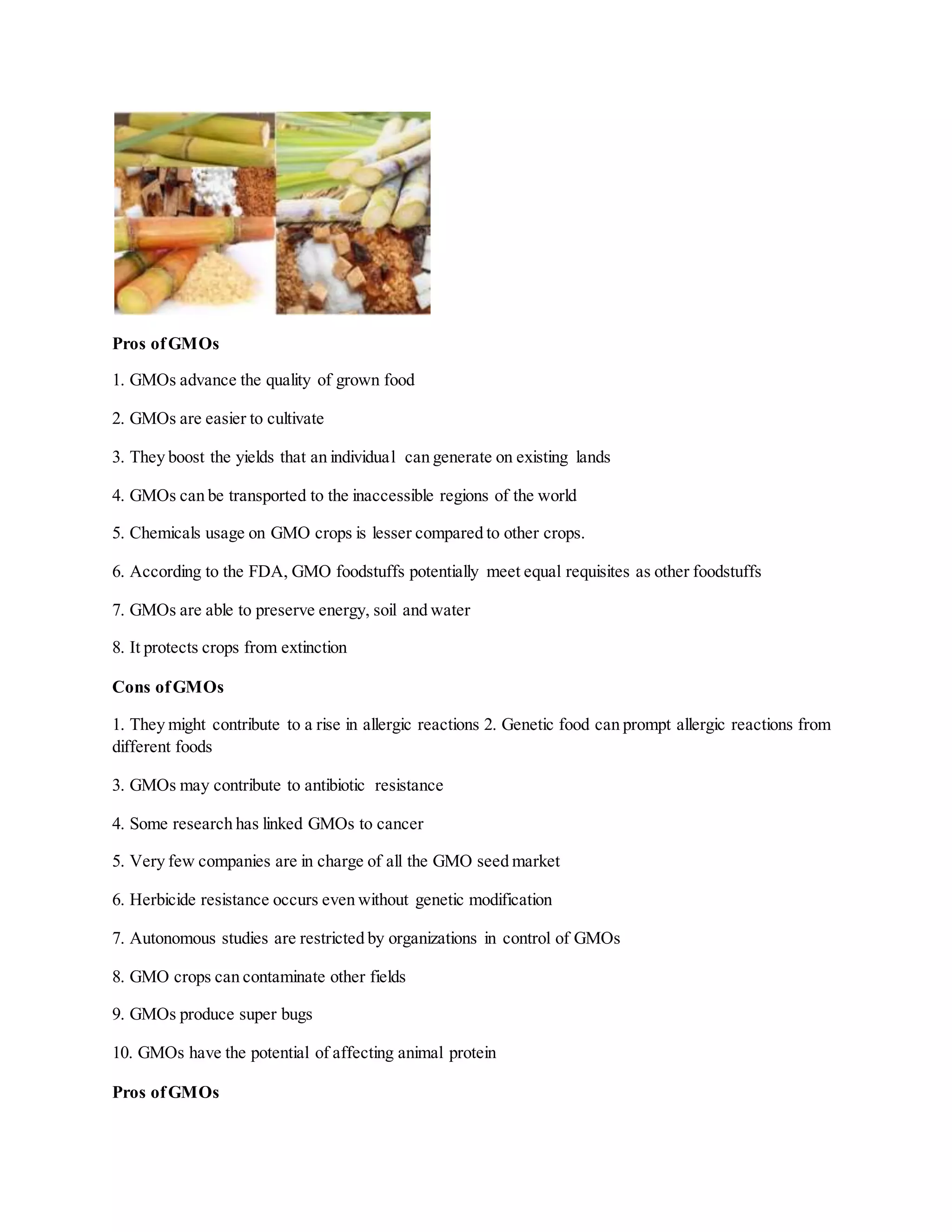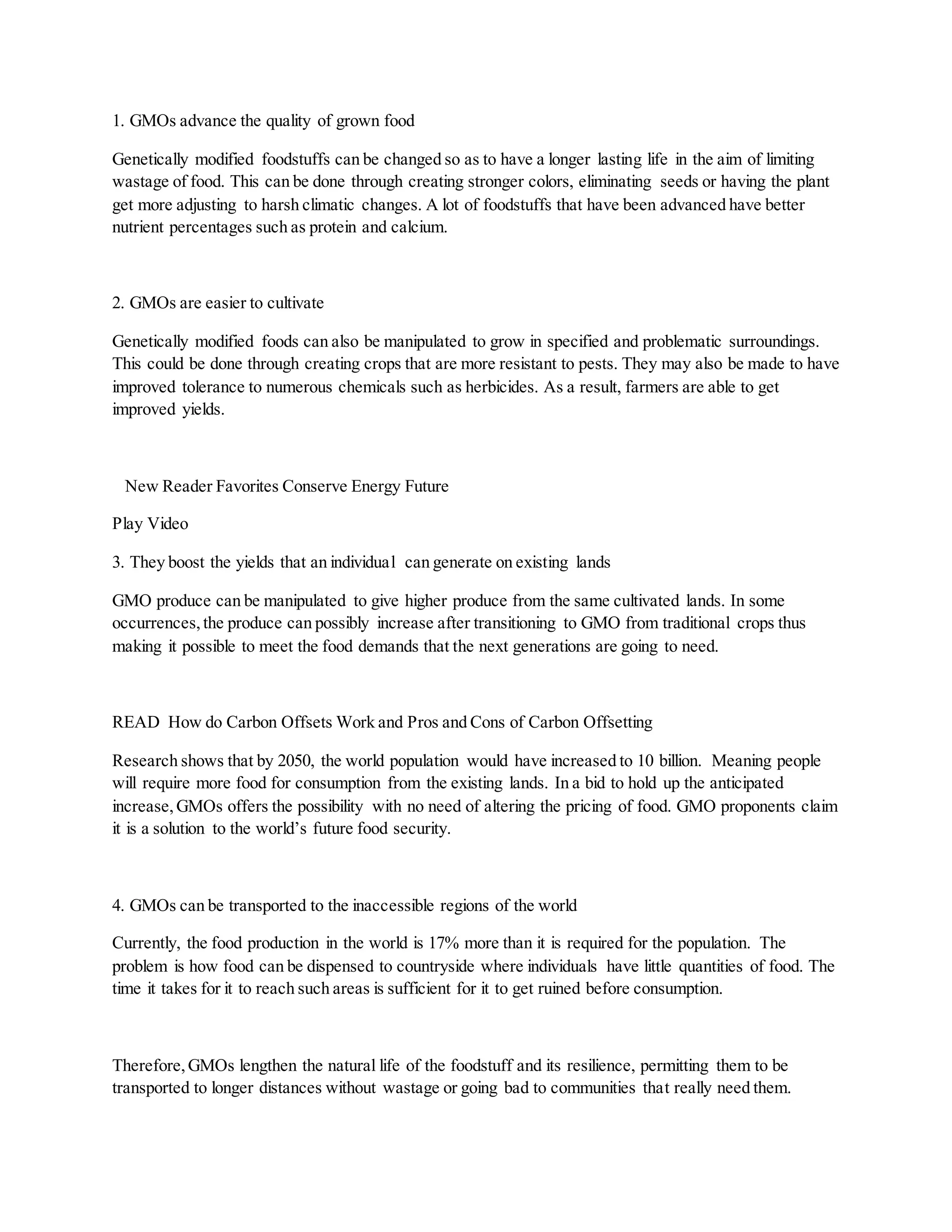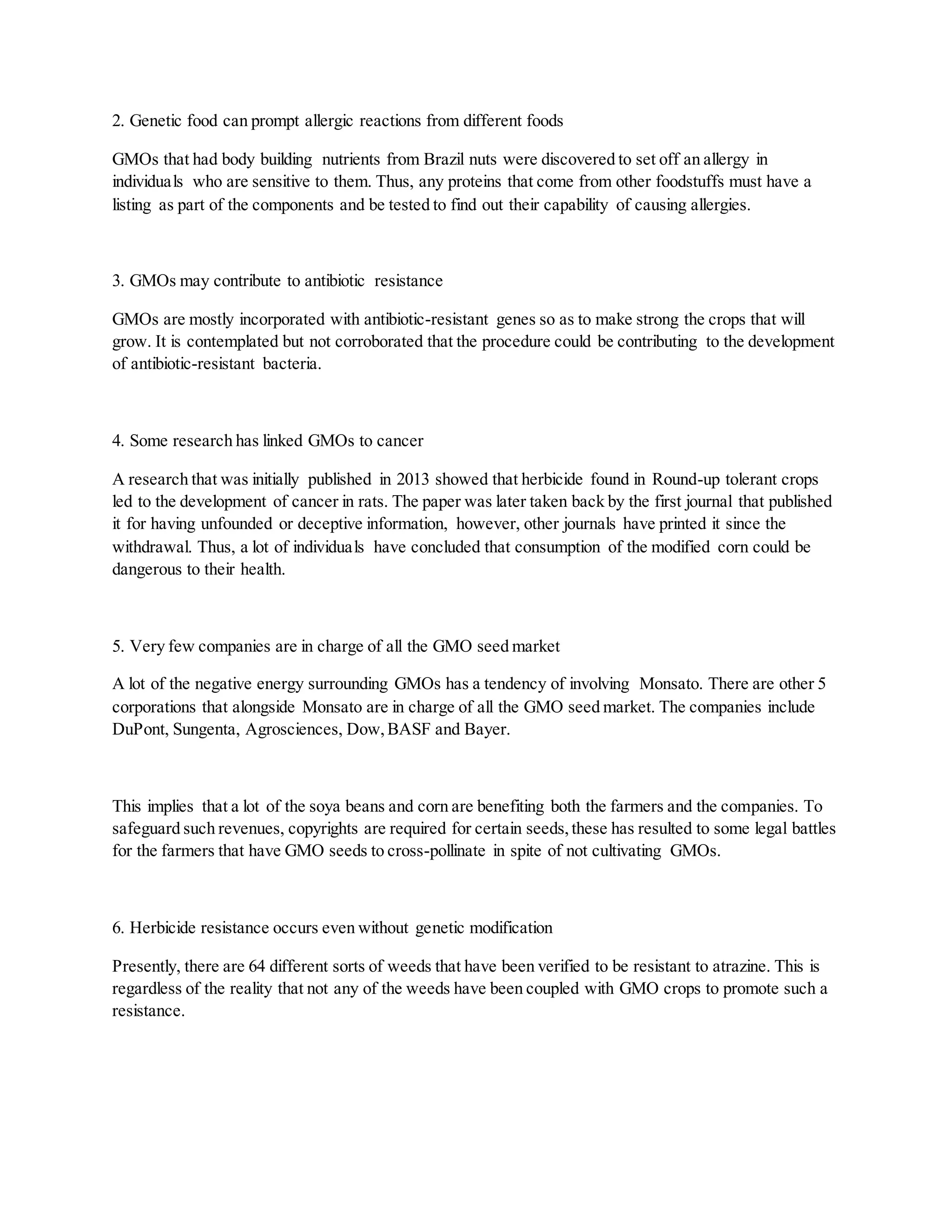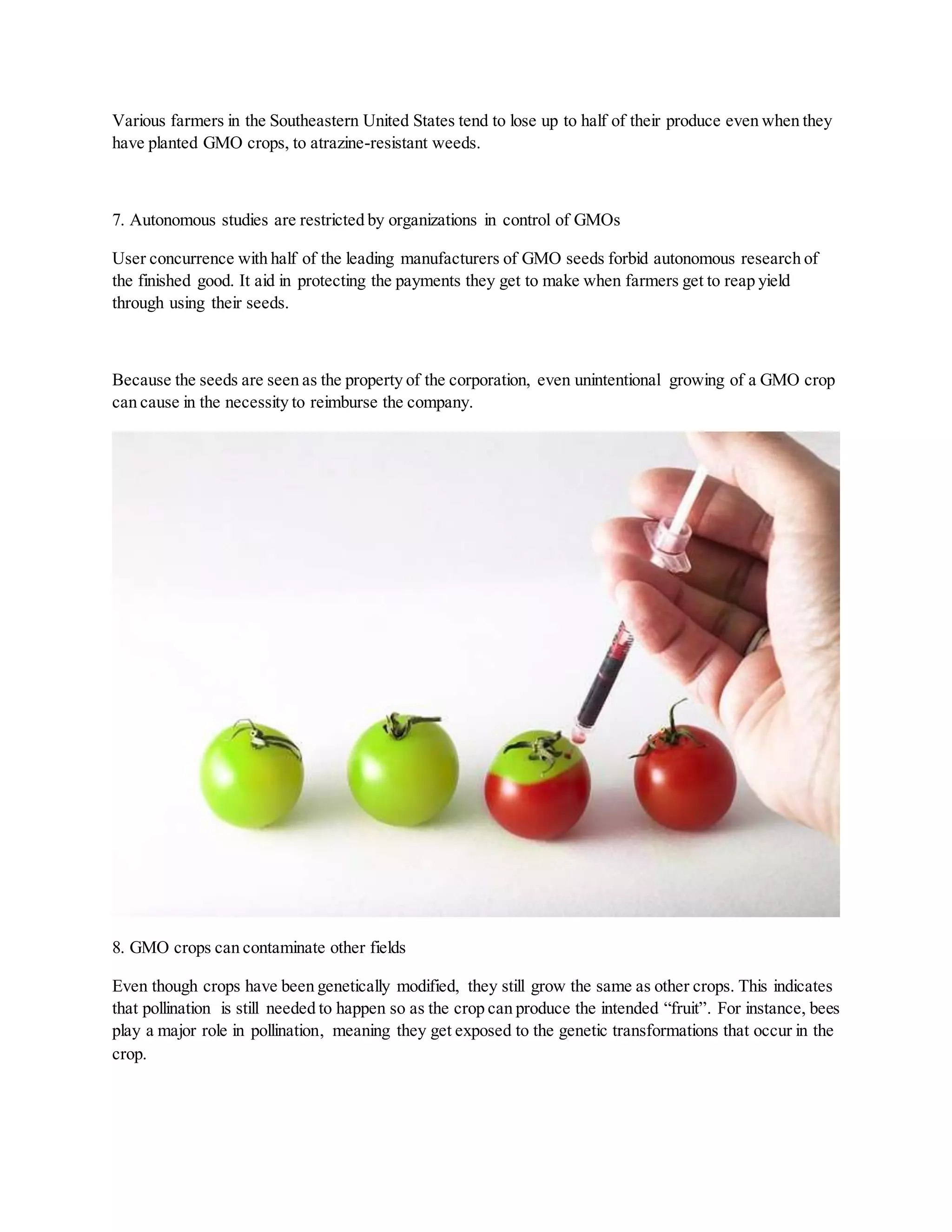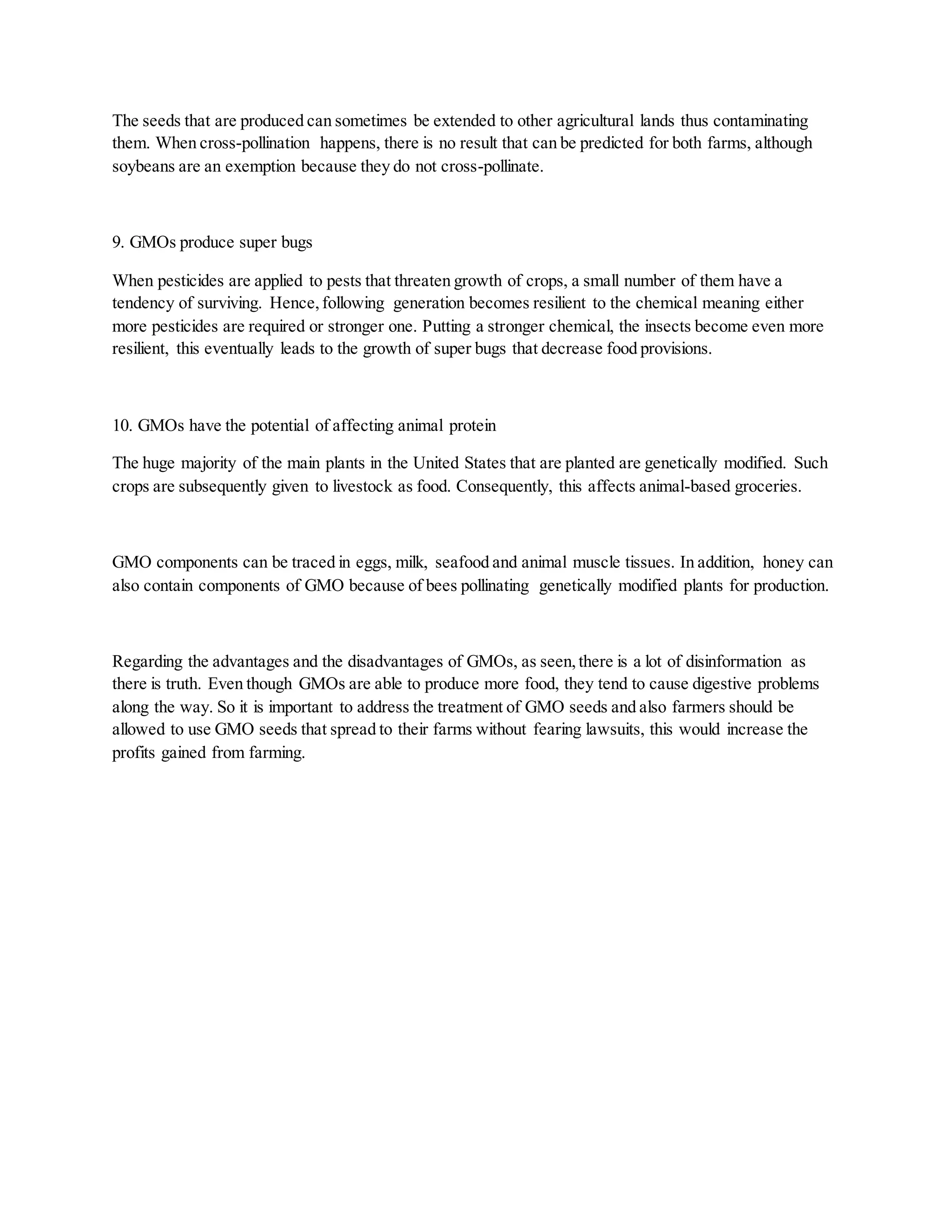1. The document discusses the pros and cons of genetically modified foods (GMOs). It provides details on the genetic engineering process used to create GMOs and examples of commonly modified crops like papaya, cotton, and corn.
2. The pros listed include increased crop yields, improved nutrition, herbicide and pest resistance, and the ability to grow foods in difficult environments. However, the cons discuss potential risks like increased allergies, antibiotic resistance, and the dominance of a few large seed companies.
3. In conclusion, the document acknowledges there are valid arguments on both sides and more research is still needed to fully understand the impacts of GMOs.
